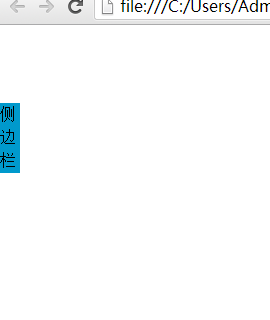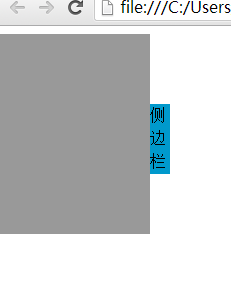
Javascript implementiert eine dynamische Seitenleiste
Im Allgemeinen wird dies durch die zweimalige Verwendung des Mauszeigers bei Mouseover und der Mausentfernung bei Mouseout vervollständigt.
Zuerst die HTML-Struktur
<body> <div id="div1"> <span>侧边栏</span> </div> </body>
Dann der CSS-Stil:
#div1{
width:150px;
height:200px;
background:#999999;
position:absolute;
left:-150px;}
span{
width:20px;
height:70px;
line-height:23px;
background:#09C;
position:absolute;
right:-20px;
top:70px;}
Die Seitenleiste im Standardstil wird ausgeblendet, wie in der Abbildung gezeigt:

Wenn die Maus hinein bewegt wird, wie in der Abbildung gezeigt:

Das Folgende ist der vollständige Code:
无标题文档 <script> window.onload=function(){ var odiv=document.getElementById('div1'); odiv.onmouseover=function () { startmove(0,10);//第一个参数为div left属性的目标值 第二个为 每次移动多少像素 } odiv.onmouseout=function () { startmove(-150,-10); } } var timer=null; function startmove(target,speed) { var odiv=document.getElementById('div1'); clearInterval(timer); timer=setInterval(function (){ if(odiv.offsetLeft==target) { clearInterval(timer); } else { odiv.style.left=odiv.offsetLeft+speed+'px'; } },30) } </script> <body> <div id="div1"> <span>侧边栏</span> </div> </body>




